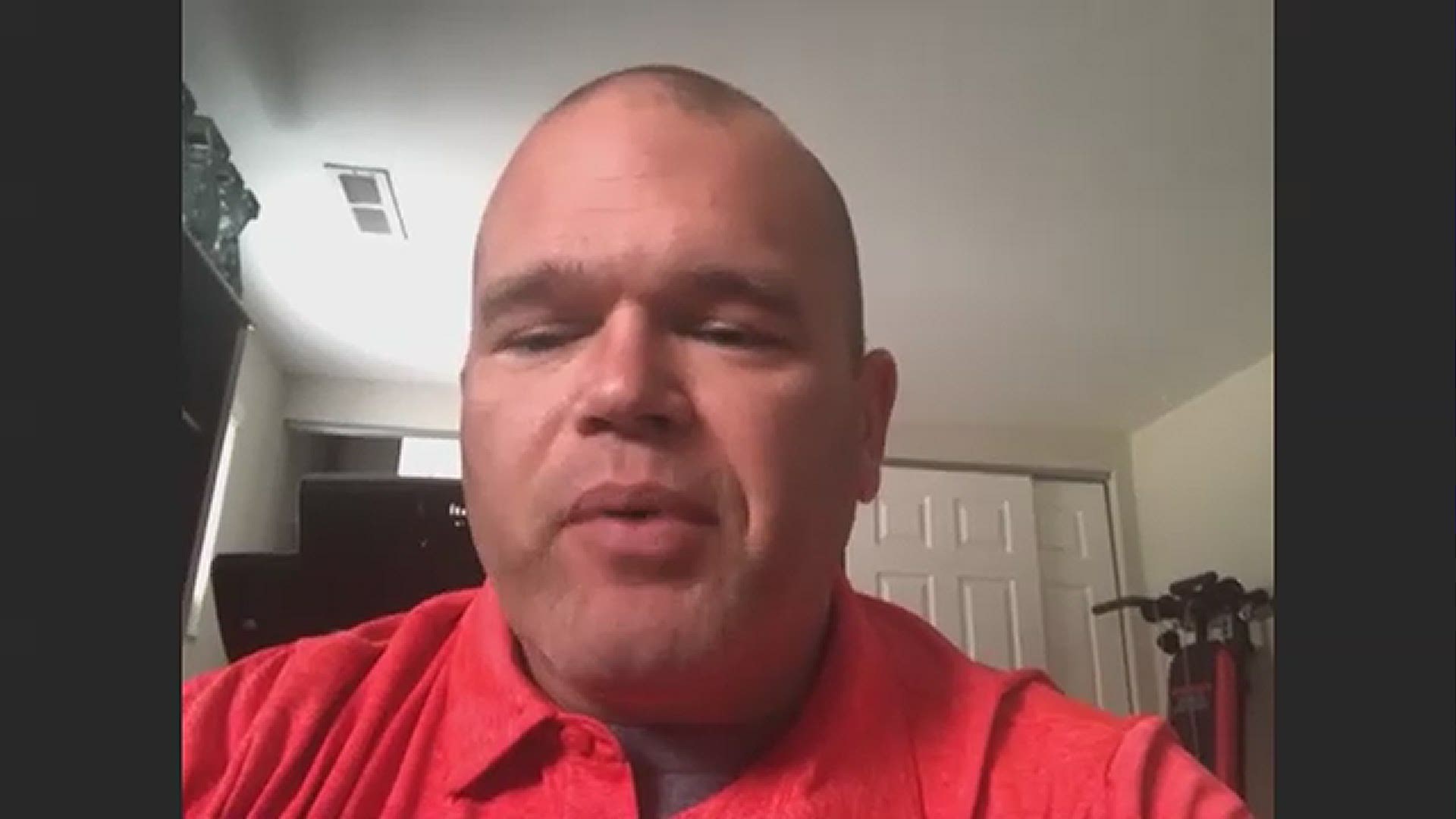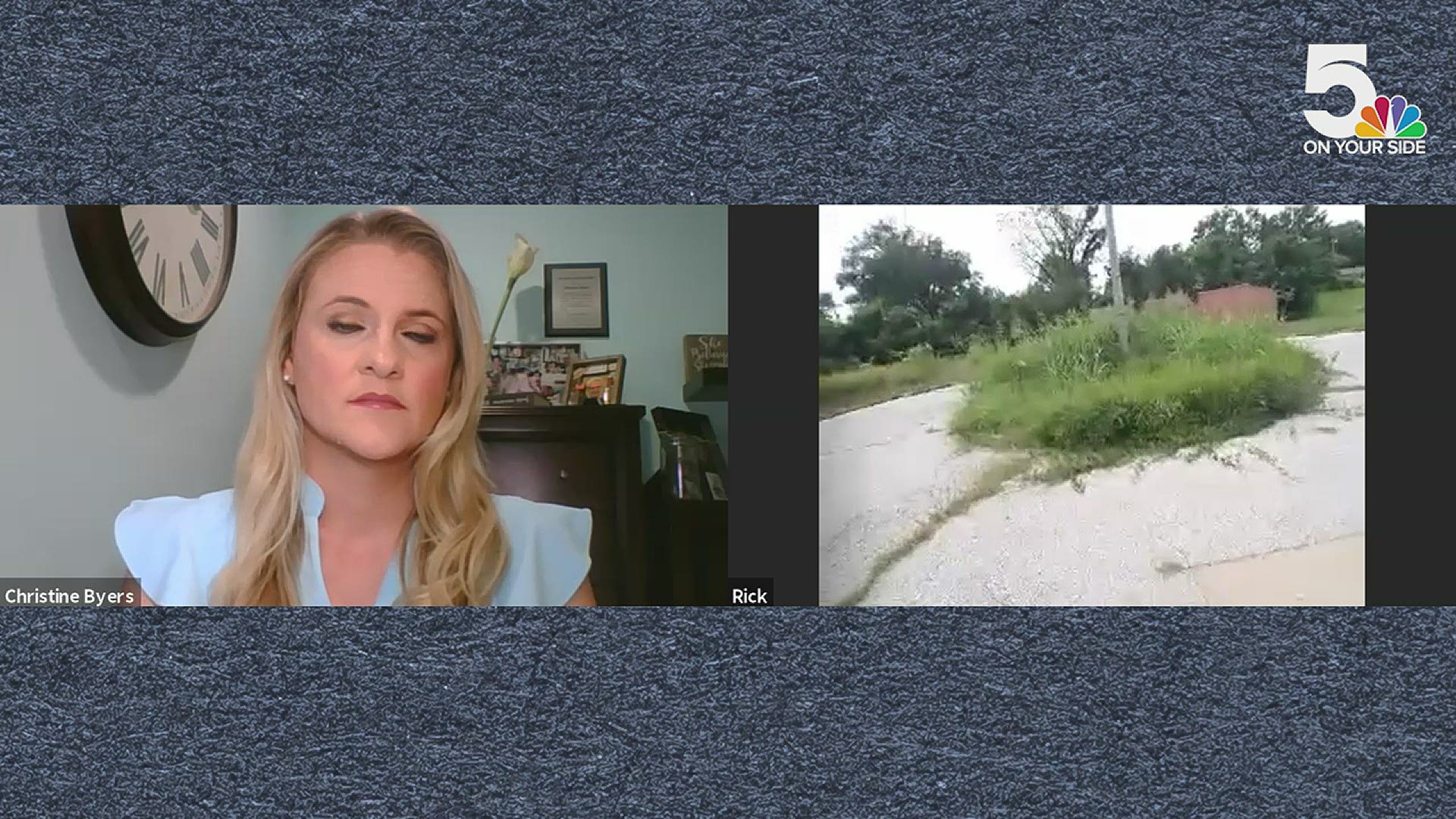ST. LOUIS — Circuit Attorney Kim Gardner has added at least 15 more St. Louis police officers to her exclusion list since she won the primary in August, according to the St. Louis Police Officers Association.
That means, 15 more officers are no longer allowed to bring cases to her office for charges because she has concerns about their credibility and integrity.
Some of the officers are victims of shootings. In cases in which officers fire at someone, officers are listed as the victims. And officers who get shot are also victims.
Police union leaders worry that their status on the list could jeopardize their chances for justice in their cases because officers on the list are not allowed to serve as witnesses, said Jay Schroeder, union president.
Gardner's office responded with a statement Friday evening,
Statement from Circuit Attorney Kimberly M. Gardner
"St. Louis Metropolitan Police Department Chief John Hayden is fully aware of the circumstances surrounding the addition of 15 officers to the exclusion list.
The St. Louis City Police union under its current leadership has a consistent antagonistic history of resisting any and all attempts to root out bad actors within our police department.
The union’s predictable over the top “sky is falling” reaction to any attempt to distinguish the vast majority of honest and hardworking officers from the few bad actors is one big reason why community relations with the people they serve are so frayed. I am sure that the people of the City of St. Louis see the union’s rhetoric for what it is."
Much about the so-called exclusion list remains a mystery.
How many officers are on it?
Public Safety Director Jimmie Edwards once estimated there were as many as 60.
I asked if the addition of these 15 officers brings the number to 75, and Mayor Lyda Krewson’s spokesman Jacob Long referred me to the police department for an official count.
“He’s aware additional officers have been placed on the exclusion list, but is reserving more comment pending more information,” Long said on Edwards’ behalf.
Sgt. Keith Barrett called the issue an "internal matter" in a statement and refused to say how many officers are on the list.
Schroeder said the officers on the list might as well be added to the 140 or so vacancies the city already has on its roster because officers on it are virtually powerless.
They might be manning their cars, showing a presence in the community, but they can’t apply for charges against anyone they arrest.
Gardner has called her list a Brady list – something prosecutors across the country use.
PREVIOUS STORY: Circuit attorney puts 22 officers on exclusion list after accusations of racist Facebook posts
But union leaders argue it is far from it because traditional Brady lists do not forbid officers from bringing cases to prosecutors for charges.
Instead, they involve a form of due process in which officers – and the public – get to know the reasons behind their inclusion on the list as well as how they can get off of it.
And whether an officer’s status on the list should affect their ability to testify in court is decided by a judge in open court.
Prosecutors let defense attorneys know if an officer is on the list, and, most importantly, why.
Defense attorneys can then argue whether they believe the officer should be excluded from the case in front of a judge.
A judge then decides whether that reasoning is sufficient to strike an officer from a case.
And the public gets to see and hear it all.
With the secrecy surrounding Gardner’s list, defense attorneys have no way of knowing whether any of the officers involved in their client’s prosecution have been labeled problem officers, either.
The police union only finds out about who is on the list when its members contact them for legal support after the department’s inspector of police has sent them an email saying only they are no longer allowed to go to the warrant office.
But the police union has fought to keep the identities of the officers secret as well.
Attorneys argued in court that the release of the names of the officers on the list could cause irreparable harm to their professional reputations. They also argued that the list shouldn’t be allowed to exist because officers on it could be missing out on promotions or other career opportunities.
But the union couldn’t prove any officers had been harmed professionally as a result of being on the list. Union leaders couldn’t find any examples of officers on the list who missed out on a promotion or any other opportunity because they are on the list.
Meanwhile, the closest Gardner’s office ever came to explaining her reasons for adding specific officers to the list was a when a nonprofit called The Plainview Project outed officers across the nation for what it labeled racist, sexist and other offensive social media posts. She added all 20 or so officers to the list then.
Some of the officers now on the list have been named Officer of the Year. Some have never had a single internal affairs complaint lodged against them in their careers, Schroeder said.
But Gardner isn’t the only prosecutor in town working with St. Louis police officers on cases.
Missouri Attorney General Eric Schmitt and U.S. Attorney Jeff Jensen have teamed up on two initiatives that involve prosecuting crime in St. Louis City.
I asked both of them if officers on Gardner’s list would be allowed to bring cases to them.
Schmitt pointed out that Gardner has never made the list public, so he has no way of knowing who is on it or why. He referred questions about whether it would impact his prosecutors’ ability to issue cases to U.S. Attorney Jeff Jensen because Schmitt’s prosecutors are essentially embedded in Jensen’s office to help get cases issued as part of the Safer Streets Initiative.
Jensen’s office is also part of a national effort to crack down on crime called Operation Legend.
Both efforts rely heavily on the work of St. Louis police officers – an unknown number of which are on Gardner’s list.
So, will an officer’s status on the list impact his or her ability to get cases issued federally?
Jensen’s spokesman, Venton Blandin, responded with a statement: “The United States Attorney’s Office makes individualized assessments of investigations on a case-by-case basis.”
The answer to that question remains a mystery, too.
Cops shot, cops shooting back?
I recently interviewed St. Louis Officer Erich vonNida’s mother, who talked about the night her son called her to tell her he had been shot.
He’s had surgery to remove the bullet from his shoulder, and is recovering at home.
He was the ninth St. Louis officer to get shot this year.
One of them, Officer Tamarris Bohannon, died.
The department told me an additional 41 officers have been shot at so far this year.
On the flip side, St. Louis police officers have fired their weapons in seven incidents.
Three people have been struck by police gunfire – one of them died.
Police union leaders say those numbers show city officers are exercising a tremendous amount of restraint.
In some departments, Los Angeles specifically, officers are rewarded with medals for showing restraint in situations where deadly force would be justified, but don’t.
It’s a controversial idea, as some police leaders say it encourages officers to hesitate when deciding whether to use force – which could lead to an officer’s death or injury.
Other police leaders, who call it tactical restraint, say it rewards officers who find another way to deal with deadly force situations.
Officer vonNida and his partner didn’t return fire when someone inside a car that fled from them during a traffic stop pelted their patrol car with bullets.
Officer vonNida’s partner let them go, in favor of getting vonNida to the hospital.
More by Christine Byers
- Byers' Beat: Why suspected cop killer may not get the death penalty
- Byers' Beat: St. Louis cops describe standoff with Officer Bohannon’s suspected killer
- Byers' Beat: 'Pure evil' inside the courtroom
- Byers' Beat: 'An animal begging to have my cage cleared' | Injured officer says Habitat for Humanity failed him and his neighbors


